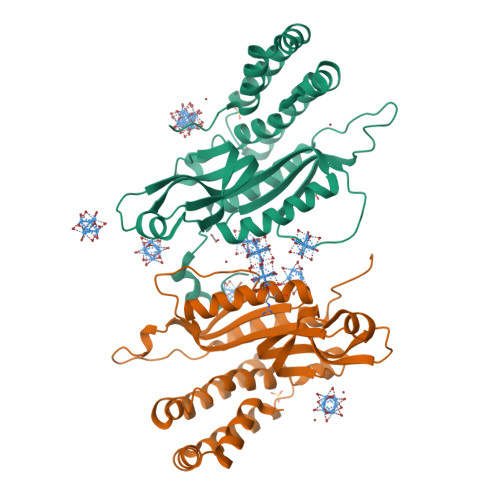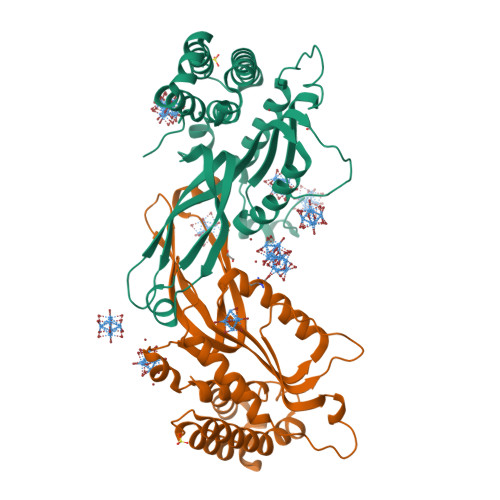Structure, subunit organization and behavior of the asymmetric Type IIT restriction endonuclease BbvCI.
Shen, B.W., Doyle, L., Bradley, P., Heiter, D.F., Lunnen, K.D., Wilson, G.G., Stoddard, B.L.(2019) Nucleic Acids Res 47: 450-467
- PubMed: 30395313
- DOI: https://doi.org/10.1093/nar/gky1059
- Primary Citation of Related Structures:
6EG7, 6M9G, 6MAF, 6MAG - PubMed Abstract:
BbvCI, a Type IIT restriction endonuclease, recognizes and cleaves the seven base pair sequence 5'-CCTCAGC-3', generating 3-base, 5'-overhangs. BbvCI is composed of two protein subunits, each containing one catalytic site. Either site can be inactivated by mutation resulting in enzyme variants that nick DNA in a strand-specific manner. Here we demonstrate that the holoenzyme is labile, with the R1 subunit dissociating at low pH. Crystallization of the R2 subunit under such conditions revealed an elongated dimer with the two catalytic sites located on opposite sides. Subsequent crystallization at physiological pH revealed a tetramer comprising two copies of each subunit, with a pair of deep clefts each containing two catalytic sites appropriately positioned and oriented for DNA cleavage. This domain organization was further validated with single-chain protein constructs in which the two enzyme subunits were tethered via peptide linkers of variable length. We were unable to crystallize a DNA-bound complex; however, structural similarity to previously crystallized restriction endonucleases facilitated creation of an energy-minimized model bound to DNA, and identification of candidate residues responsible for target recognition. Mutation of residues predicted to recognize the central C:G base pair resulted in an altered enzyme that recognizes and cleaves CCTNAGC (N = any base).
Organizational Affiliation:
Division of Basic Sciences, Fred Hutchinson Cancer Research Center, 1100 Fairview Ave. N., Seattle, WA 98109, USA.





















